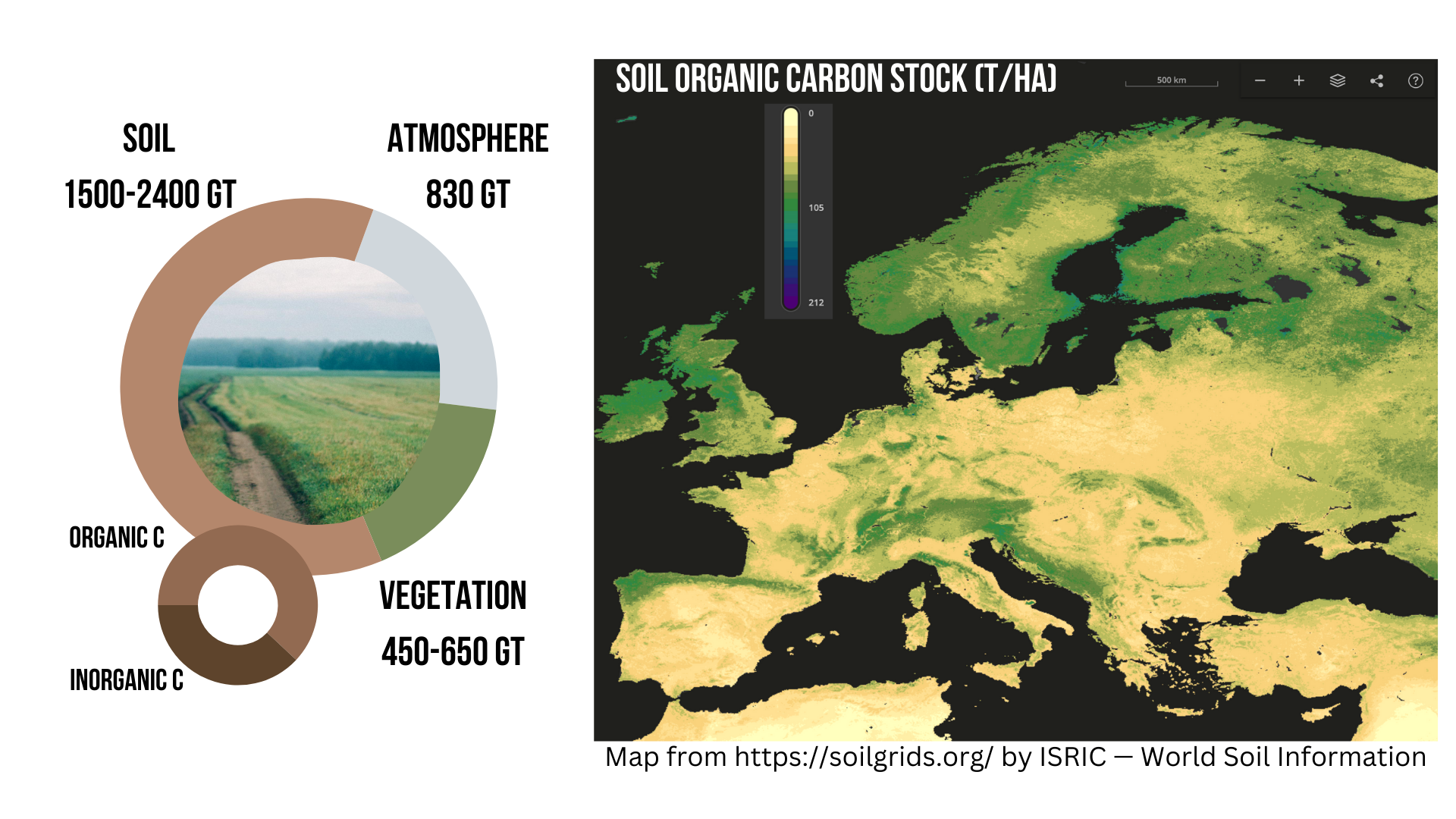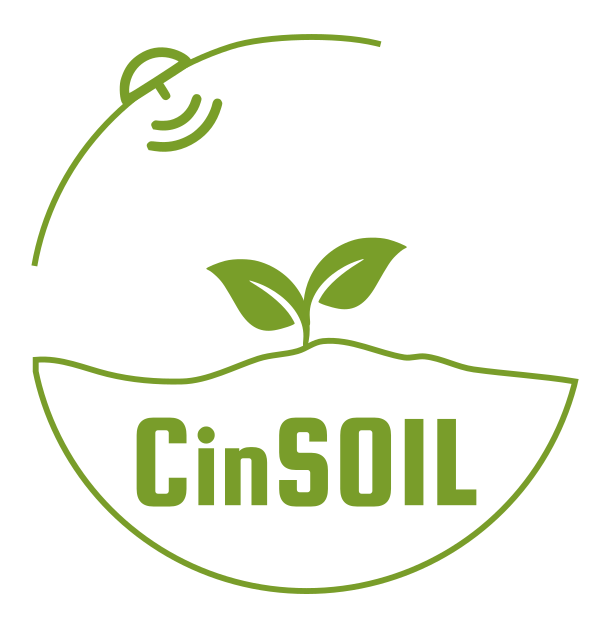At CinSOIL we are building data- and science-driven deep-tech tools to enable the full potential of soil carbon sequestration. Soil is the largest terrestrial carbon sink, already storing more carbon than vegetation and atmosphere combined. But how does carbon exactly get into soil, and more importantly, how does it stay there? It is the result of a complex network of physico-chemical interactions and in this article we will break it down into simple steps.

The development of agriculture during the past centuries and particularly in last decades has entailed depletion of substantive soil carbon stocks. […] It is estimated that soils can sequester around 20 Pg C in 25 years, more than 10% of the anthropogenic emissions.
FAO, What is Soil Carbon Sequestration?
Soil carbon sequestration is the process of storing carbon in the soil. Plants capture carbon dioxide (CO2) from the atmosphere through photosynthesis, turning that carbon into biomass. Plant residues, but animal residues as well, are decomposed by soil macro- and microfauna and become humus, a dark and nutrient-rich form of organic matter. Microorganisms in the soil, such as bacteria and fungi, play a vital role in breaking down organic matter and recycling nutrients, releasing essential nutrients that plants need to thrive.
Over time, the carbon in humus undergoes various transformations. Initially, fresh carbon from decomposed organic matter is readily available for soil organisms and plants, providing immediate nutrients. As the decomposition process continues, some of this carbon becomes more stable and resistant to further breakdown, known as resilient carbon. This resilient carbon contributes to long-term soil fertility and carbon storage. Additionally, soil particles such as clay and minerals play a role in the process called sorption, where organic molecules adhere to these particles, further stabilizing the carbon and preventing it from being quickly decomposed. Sustainable soil management practices are pivotal to ensure this delicate chain of processes is not perturbed and soil carbon is effectively locked away in the soil for extended periods, contributing to the soil’s role as a significant carbon sink.
When we talk about soil carbon, we often refer to Soil Organic Carbon (SOC). SOC is a key indicator of soil health and fertility and is a constituent of the Soil Organic Matter (SOM), which is the organic fraction of the soil that includes plant and animal residues at various stages of decomposition, cells and tissues of soil organisms, and substances synthesized by the soil population. Evaluating soil carbon stocks involves measuring the amount of SOC stored in the soil at different depths and across various land uses. This is typically done through soil sampling and laboratory analysis. Soil samples are collected from multiple locations and depths to capture variability within a field or region. In the laboratory, these samples are analyzed to determine their carbon content, often using methods like dry combustion.
Solutions to allow easier, cheaper, and more scalable soil carbon assessment are urgently needed. We must urgently transform our current food system to make it more sustainable and enable all stakeholders across the agri-food value chain to monitor and manage this precious resource effectively. New policy frameworks are supporting this call, recognizing soil carbon sequestration as a powerful tool in our fight against climate change and a key to sustainable agriculture. This is why CinSOIL is developing a measuring, monitoring, reporting, and verification (MMRV) software that will support sustainable soil management practices. Our goal is to bridge the knowledge and technological gaps that still hinder the carbon sequestration potential of our soils.


